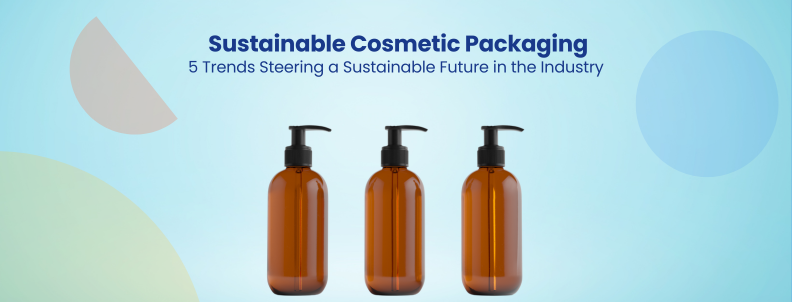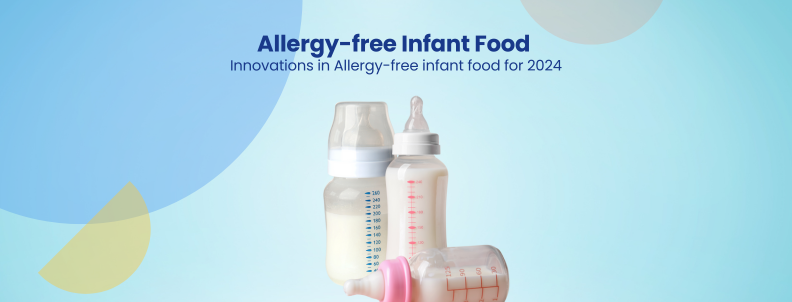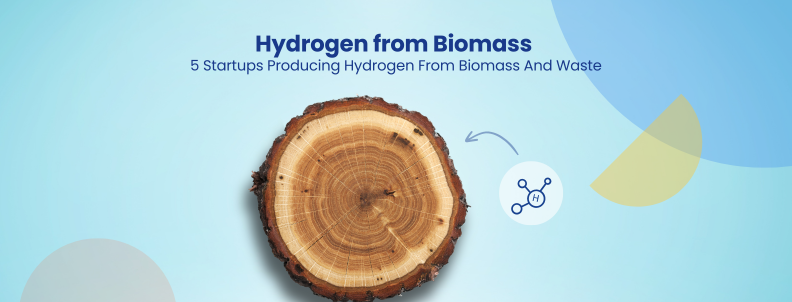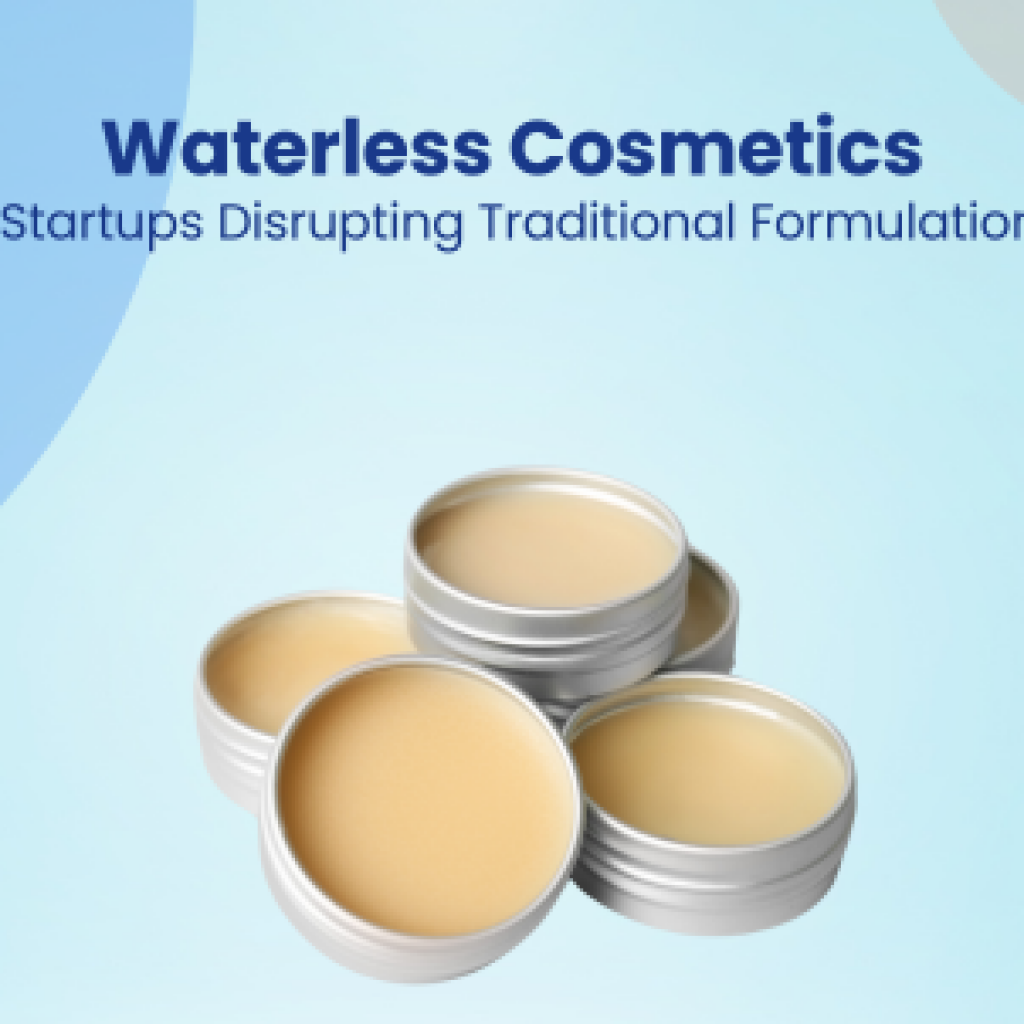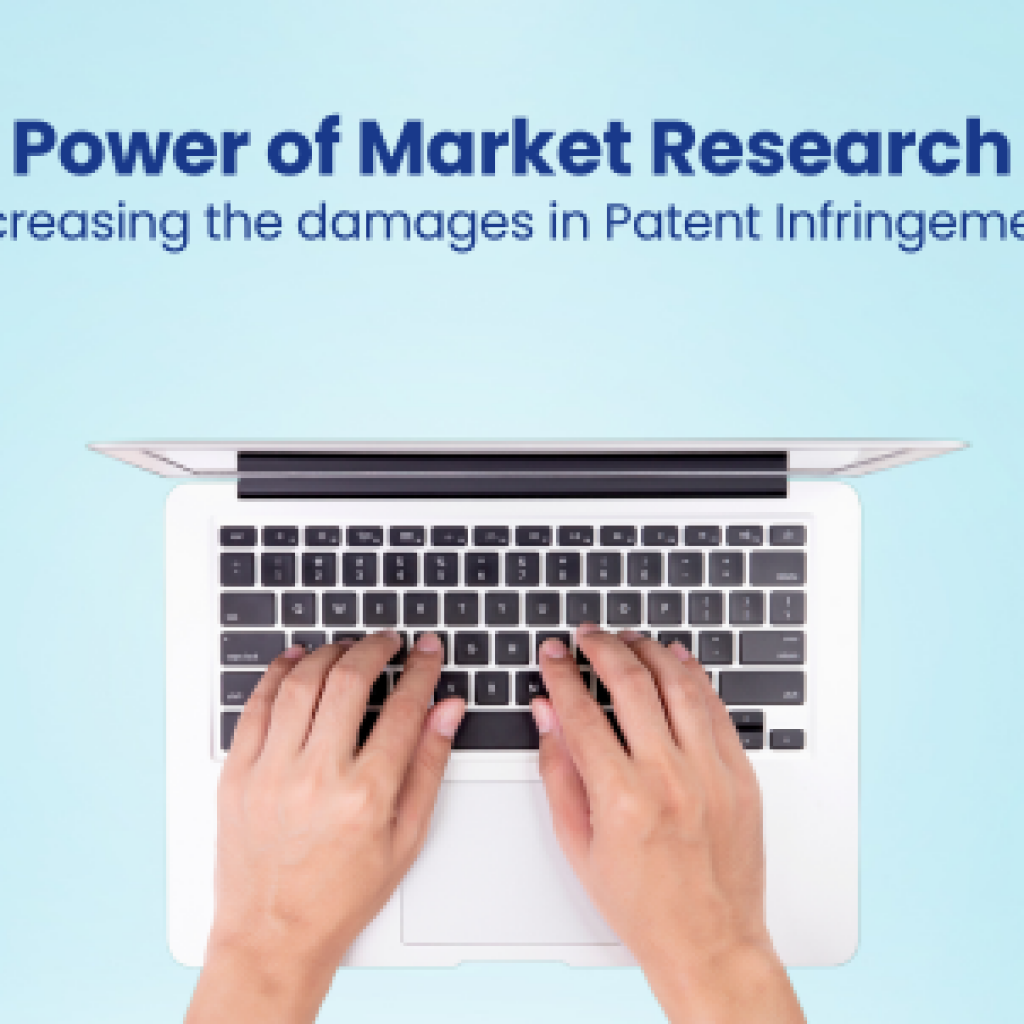The cosmetics industry utilizes roughly 120 billion packaging units annually, making it the fourth largest user of plastic packaging. As a result, many renowned brands are leaning towards eco-firendly packaging. Companies such as LUSH, Herbivore, Giorgio Armani, and L’Occitane, were among the leaders, recognized for their commitment to eco-friendly packaging practices in 2023.
Want to get a comprehensive analysis of cosmetic industry trends that will transform the industry in 2024? Fill out the form below and get offline access to our exhaustive cosmetic trend report directly in your inbox.
This report explores five emerging sub-trends in sustainable cosmetics packaging, covering the latest innovations, collaborations, and market developments.
1. Post-Consumer Recycled (PCR) Packaging
Post-consumer recycled (PCR) packaging is rapidly gaining popularity, with forecasts predicting the sector’s expansion from $44.57 billion in 2024 to $72.93 billion by 2032. The trend toward PCR packaging is evident from increased market activities and a spike in patent filings, particularly within the beauty industry.
Numerous brands are working to eliminate harmful plastics from their processes with PCR packaging:
- L’Oreal aims to achieve 50% PCR plastic usage in its packaging by 2025.
- Estee Lauder plans to incorporate 25% or more PCR plastic into its packaging.
- Among the first to adopt PCR packaging, Aveda now ensures that approximately 90% of its high-density polyethylene (HDPE) plastic bottles contain at least 80% PCR content.
Recent patented innovations within PCR packaging
1. Unilever’s eco-friendly black-colored packaging
In August 2021, Unilever submitted a patent application for an eco-friendly black-colored packaging solution. The packaging article uses a multilayer design composed predominantly of post-consumer resin (PCR), exceeding 95% recycled high-density polyethylene (HDPE). To meet consumer expectations for an appealing black color, Unilever employed a multilayer approach, incorporating inner and outer layers made from PCRs.
2. Albea’s multi-chamber tube stores multiple liquids in one container
Albea Services, a packaging and container manufacturing company, submitted a patent application in October 2021 for a multi-layer tube container featuring a layer crafted from PCR resin. This eco-friendly container is designed to accommodate various liquid or pasty compositions, specifically catering to the cosmetic industry.
Recent market activities within PCR packaging
- In May 2022, Virospack, the world’s leading manufacturer of cosmetic dropper packs for skin care, hair, nails, and liquid makeup, launched fully recyclable droppers made with PCR materials.

- In August 2022, French luxury retailer L’Occitane en Provence collaborated with materials company LyondellBasell, chemical recycler Plastic Energy, and beauty packaging provider Albéa Tubes to create tubes with 93% recycled polyethylene (PE) content.
- In March 2023, Geka launched the beauty industry’s first cosmetic brush made of PCR fibre filaments. The internationally recognized manufacturer of mascara brushes released two innovative fibre filaments for vegan mascara and eyebrow brushes made of 65% PCR material.

- In May 2023, Swiss packaging provider Hoffmann Neopac launched a cosmetic tube containing 60% PCR content. The tube is reportedly fully recyclable in existing HDPE streams and contains up to 60% food-safe PCR material in the shoulder and cap of the pack.
2. Upcycled Packaging
For the cosmetics industry, upcycled packaging might include recycled plastics, glass, textiles, and even agricultural by-products like husks and stems. The results are visually striking and significantly reduce the environmental impact associated with manufacturing virgin packaging materials.
Major players like L’Oréal, Unilever, and The Body Shop have already introduced product lines featuring upcycled packaging, and many more are expected to follow as consumer preferences move towards environment-friendly products.
Recent patented innovations within upcycled packaging
1. Packaging made from beer by-product
In January 2023, Fancl Corporation, a Japanese cosmetics firm, partnered with Kirin Group, a prominent beer and beverage company, to create a new form of cosmetics packaging. This innovative packaging is produced from the residual by-products of beer manufacturing, specifically the lees from Ichiban Shibori Brewing, for which they have filed a patent application.

2. Plastic alternatives derived from wooden scraps
In May 2023, mPackting, a provider of complete packaging solutions, introduced mBlack, a sustainable substitute for plastic, developed as a carbon sink material. Patented mBlack is created using wooden waste from Minelli Group’s high-quality solid wood components. These wooden remnants are converted through pyrolysis into a fine powder and subsequently merged with a biopolymer to formulate mBlack.

Recent market activities within upcycled packaging
In October 2023, British skincare company Elemis collaborated with Morro, a producer of plant-based materials, to create single-use sachets for cosmetics that are free from plastics and fully biodegradable. Elemis repurposed its residual plant materials to craft a bio-based film that forms the core of these environmentally responsible sachets.
3. Refillable Packaging
According to upcycled beauty, if refill systems were adopted widely in the beauty and personal care sectors, the savings in packaging and shipping could cut greenhouse gas emissions by about 80-85%!
Refillable packaging is becoming a major trend in the beauty industry, with consumers showing a preference for brands that offer programs for refilling products. Prominent brands such as Sugar Cosmetics, Wow Skin Science, Kiehl’s, Bare Necessities, among others, are integrating refillable solutions into their product lines.
Recent patented innovations within refillable packaging
- In September 2021, the French-based perfumes and toiletries startup Innovescence filed a patent application on a refillable packaging device for a cosmetic composition.
- In March 2023, the London-based design and innovation consultancy, Morrama, unveiled its latest project in the cosmetics sector: Maya, a collection of refillable packaging created in collaboration with the Shanghai-based packaging producer PPK. Acknowledging that consumers often do not use up a whole stick of lipstick, their design features a detachable mechanism that stores refills in separate board-based packaging, similar to crayons. This patented design allows for easy selection and insertion of the preferred lipstick shade into the case.

Recent market activities within refillable packaging
- In April 2023, Ralph Lauren Fragrances launched three new scents in refillable bottles constructed from 20% recycled glass post-consumer use and were 30% lighter than the brand’s typical bottles. These bottles were recyclable and specifically made to be reused. They incorporated an automatic stop feature to prevent overfilling and avoid wasting the fragrance during the refill process.
- In November 2023, Schwan Cosmetics, a German company introduced its innovative refillable, mechanical lip liner range. The product features exchangeable cartridges, enabling customers to get new supplies without needing to dispose of their existing Schwan lip liner containers.

4. Dissolvable & Naked Packaging
By eliminating packaging altogether or utilizing innovative materials that dissolve upon use, brands are addressing the plastic waste problem and offering consumers a distinct experience. By eliminating excess packaging components like caps, labels, and outer boxes, dissolvable and naked products significantly lower the carbon footprint associated with manufacturing and transportation
The advantages aren’t limited to environmental impacts; these also offer a simplified, highly convenient user experience that aligns with the needs of the modern, minimalist consumer.
While still a relatively young category, dissolvable and naked cosmetics are rapidly gaining traction. There has been a surge in product launches in this space, with major brands like Lush and L’Occitane.
Recent market activities within dissolvable & naked packaging
- A Dutch startup, SOAPBOTTLE has created packaging made entirely of soap. Their innovative product is a soap-based bottle designed to hold liquid body care items such as shampoo, body wash, or hand soap. Acting both as a container and functional soap, it ensures that every part of the product is utilized. Once the liquid is depleted, the container transforms into regular hand soap, reflecting a commitment to zero waste. The product is currently in the developmental stage.

- Notably, in 2022, La Jolla introduced Brixy, a skincare brand acclaimed for its creation of eco-friendly hair and skincare products in bar format. Since its inception in 2022, Brixy has made a substantial impact, contributing to the preservation of the environment by eliminating the need for over 200,000 plastic bottles. A single bar of body wash replaces a minimum of two plastic bottles, while each shampoo and conditioner bar is estimated to save an average of three plastic bottles.
- In May 2023, Lush, a UK-based brand, introduced an innovative mascara that breaks away from the conventional packaging norm. Unlike traditional mascara, which is often encased in plastic tubes with an integrated application brush, Lush’s innovation takes the form of a cylinder of the mascara itself, eliminating the need for the usual plastic tube.

5. Carbon-negative Packaging
From compacted bamboo and mushroom mycelium to biocomposites made from agricultural husks and plant fibers, the possibilities for carbon negative cosmetic packaging are vast.
By embracing carbon negative packaging, cosmetic brands are positioning themselves as leaders in the accelerating transition toward a circular, sustainable economy.
While still an emerging category, carbon negative packaging is rapidly gaining traction among major industry players. L’Oréal, Unilever, and Estée Lauder have all initiated pilot programs exploring bio-based packaging solutions, with broader rollouts anticipated in the coming years.
Recent market activities within carbon-negative packaging
- In February 2022, climate conscious skincare brand BYBI launched the “world’s first carbon negative cleanser”. The cap and nozzle are biodegradable and compostable and don’t leave behind microplastics. The bottle and carton are made from sugar cane, which is a 100% recyclable material that is carbon negative. Further, the product is manufactured using 100% green energy. Hence, the product’s negative carbon emissions relate to its whole supply chain.

- In a significant move in July 2022, Revlon partnered with Origin Materials, a leading carbon-negative materials company worldwide, to introduce advanced carbon-negative materials for its cosmetics packaging. Origin Materials has dedicated over a decade to developing a platform that transforms carbon derived from abundant, non-food biomass like sustainable wood residues into valuable materials, concurrently capturing carbon in the process.
- In April 2022, LVMH Beauty also collaborated with Origin Materials to adopt carbon-negative PET for its cosmetics and perfume brands.
Future Outlook
The path toward a sustainable future for the cosmetics industry is both challenging and filled with opportunities. Those brands that embrace innovation, collaboration, and a holistic approach to sustainable packaging will not only meet the demands of eco-conscious consumers but also position themselves as leaders in an increasingly resource-constrained world.
Therefore, engaging with these sub-trends and investing in sustainable solutions can give your brand a competitive edge and help secure your place in the market.
Fill out the form below to access our 2024’s Cosmetic Trend Report and look at future trends in-depth!
Authored By – Hadeeba Jalali, Patent Analytics
Edited By – Ridhima Mahajan, Marketing
Also Read – 3 Cosmetic Trends Propelling Industry Innovation in 2024

